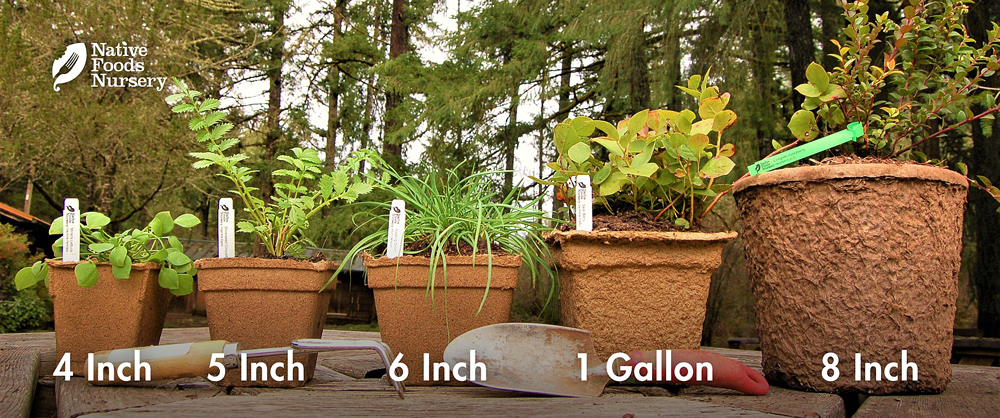Buffaloberry is a medium sized, nitrogen-fixing, deciduous shrub with edible berries.
Edible Uses
The bright red berries are a native food that have a tart but pleasant taste that becomes sweeter after a frost. They can be eaten raw or cooked, they can also be added to berry compotes, jams and preserves. The berries are very nutritious and contain antioxidants, dietary fiber and high levels of vitamin C.
Many Native Americans prized the berries and used them as a primary ingredient in a version of ice-cream (especially Shepherdia canadensis).
***NOTE: The raw berries contain a small amount of the toxin "saponin", which is not readily absorbed by the body, but can be broken down by cooking. When trying the berries for the first time, use caution. Eat small quantities to see how your body responds.
***NOTE: Buffaloberry is dioecious, meaning it has separate male and female plants, both of which are needed to produce fruit. We do not gender our plants at this time, however, and cannot guarantee any specific gender.
Ornamental Qualities
Buffaloberry’s strength in the ornamental garden comes from its ability to thrive in areas where other plants fail. If you have poor soils, dense shade, or areas that are difficult to water, consider this plant! As is characteristic of the Elaeagnus family, the leaves, stems, flowers and fruits have an interesting scaly sheen and its berries a beautiful red color.
The Buffaloberry truly shines in cold climes where it can survive temperatures as low as -40!
Environment and Culture
Buffaloberry is widely adapted across the Pacific Northwest and Canada and grows as an understory plant in conifer/pine forests. It is most common in disturbed or poor soils where its nitrogen fixing ability rehabilitates the soil. Its berries are a valuable food source for native wildlife, including many species of birds.
Harvest, Care, and Preparation
Buffaloberry is a hardy shrub that will thrive in poor soils and difficult growing conditions. After establishment they do not need to be watered or fertilized. Some pruning to maintain size and form may be desired.
Harvest the berries after they ripen in the fall. Place a tarp or mat below the berries and shake the branch, only the ripest berries will fall and this will allow the other berries to continue ripening. Once collected the berries can be eaten raw or cooked and make an excellent preserve. Add them to mixed berry compotes or jams.
The saponin (especially in Shepherdia canadensis) causes the berries to froth when they are churned and they can be beaten into a sweet, frothy foam that is sweet with a slightly bitter aftertaste (reminiscent of certain coffees). This mixture was considered a delicacy by many Native Americans, and is still eaten at festive gatherings to this day.
- Native Range: Western United States, Upper Midwest
- USDA zones: 2-9
- Ease of Care: Very Easy
- Deer Resistance: High
- Light Requirements: Any, but will produce more berries in full sun.
- Soil Type: Any
- Water Requirements: dry-wet
- Pollination: Needs Pollinator
- Bearing Age: 2-3 Years
- Size at Maturity: 6-20ft
- Bloom Time: April-May
- Harvest Time: September-October
Pot Sizing Guide
